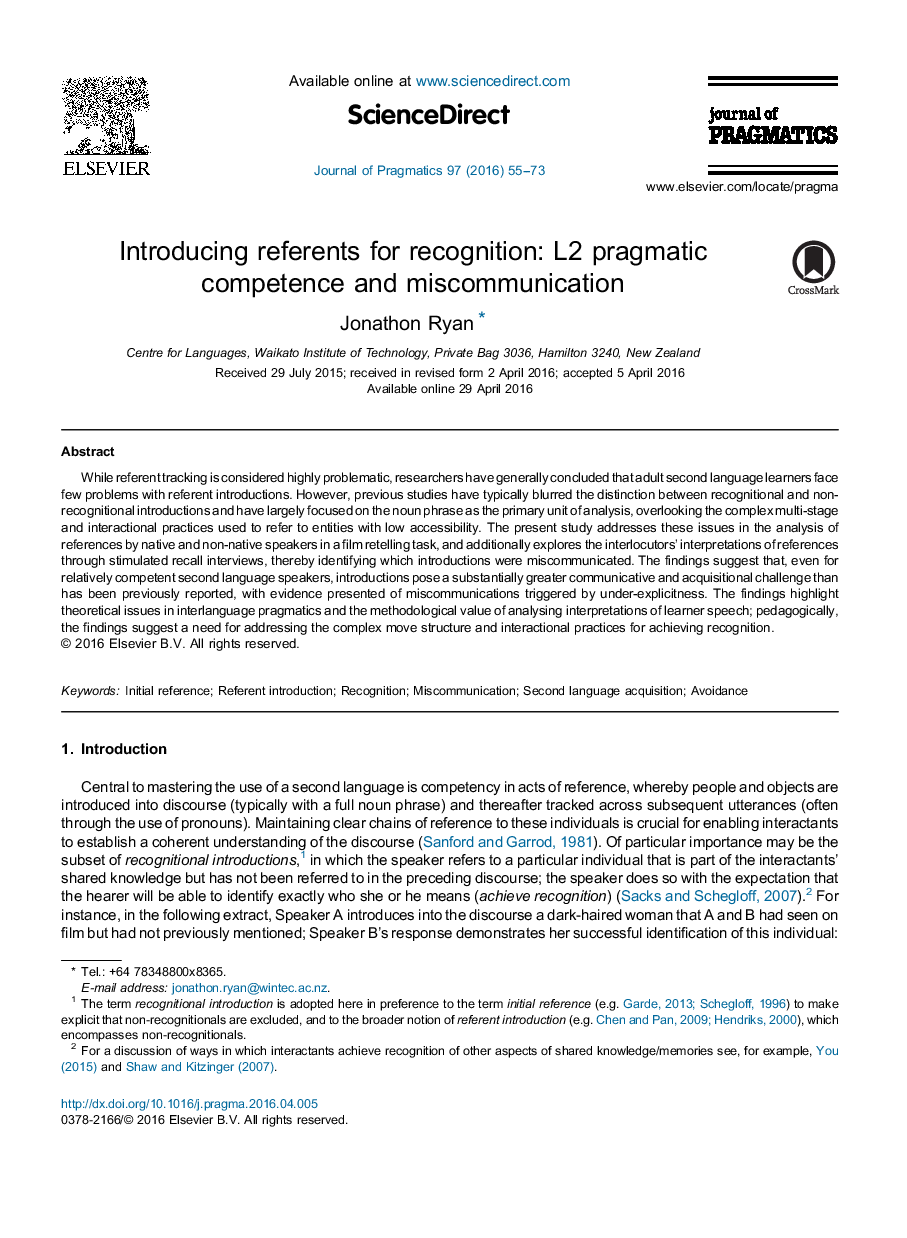| Article ID | Journal | Published Year | Pages | File Type |
|---|---|---|---|---|
| 932502 | Journal of Pragmatics | 2016 | 19 Pages |
•L2 speakers had considerable difficulty introducing hearer-known referents.•Difficulties occurred more at the level of discourse units than at the NP level.•Systematic under- and over-explicitness detected.•Non-recognitionals used to avoid some difficult references.•Some infelicities triggered miscommunication.
While referent tracking is considered highly problematic, researchers have generally concluded that adult second language learners face few problems with referent introductions. However, previous studies have typically blurred the distinction between recognitional and non-recognitional introductions and have largely focused on the noun phrase as the primary unit of analysis, overlooking the complex multi-stage and interactional practices used to refer to entities with low accessibility. The present study addresses these issues in the analysis of references by native and non-native speakers in a film retelling task, and additionally explores the interlocutors’ interpretations of references through stimulated recall interviews, thereby identifying which introductions were miscommunicated. The findings suggest that, even for relatively competent second language speakers, introductions pose a substantially greater communicative and acquisitional challenge than has been previously reported, with evidence presented of miscommunications triggered by under-explicitness. The findings highlight theoretical issues in interlanguage pragmatics and the methodological value of analysing interpretations of learner speech; pedagogically, the findings suggest a need for addressing the complex move structure and interactional practices for achieving recognition.
